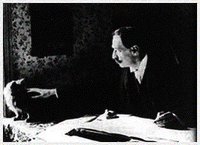
Late Onset – Louis Wain
Louis Wain was born in London’s Clerkenwell district in 1860 and eventually became an artist, selling his sketches of dog shows to the Illustrated Sporting News. He married his youngest sister's governess, Emily Richardson, which was considered quite scandalous at the time. His wife contracted breast cancer and died three years later. To entertain her on her sickbed, Wain started drawing their cat, Peter. Emily encouraged him to send these drawings to newspapers and magazines, and soon the Louis Wain cat was a household name, not only in Britain but also in America, where his comics and drawings of cats appeared in several newspapers. Louis Wain was elected as President of the National Cat Club and wrote the book 'In Animal Land with Louis Wain' in 1904. Wain continued drawing cats for newspapers and children’s books until he fell victim to schizophrenia in 1917 at the age of 57. Coupled with WWI and the public dwindling interest it cats, Wain soon fell into poverty and in 1924 was certified “insane” and committed to the pauper’s wing of a mental hospital in Tooting, England. Years later a foundation was set up for him by his peers (including the famous H.G. Wells) which enabled Wain to spend the last years of his life in comfort in private asylums in Southwark and Napsbury, where he continued to paint and draw his cats. Wain allows us a unique insight into the delusions and course of illness in a late onset schizophrenic.
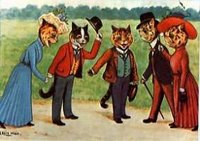
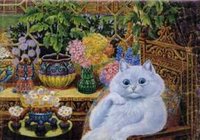
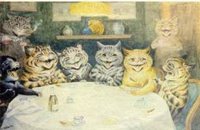
Wain’s early work, while strange to some, is dominated by fanciful imagery of cats dressed in human clothes or engaged in human activity. Considering that much of his work was political cartooning and illustrating for children’s books, the early work seems an adequate representation of his pre-schizophrenic period.
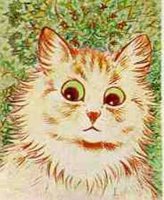
During the onset of his disease at 57, Wain continued to paint, draw and sketch cats, but the focus changed from fanciful situations, to focus on the cats themselves.
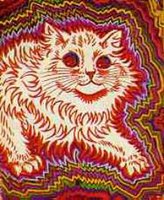
Characteristic changes in the art began to occur, changes common to schizophrenic artists. Jagged lines of bright color began emanating from his feline subjects. The outlines of the cats became sever and spiky, and their outlines persisted well throughout the sketches, as if they were throwing off energy.
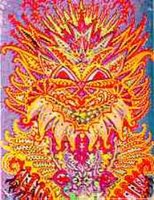
Soon the cats became abstracted, seeming now to be made up of hundreds of small repetitive shapes, coming together in a clashing jangles of color that transform the cat into something resembling an Eastern diety.
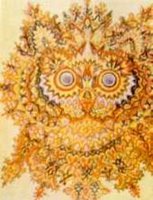
The abstraction continued, the cats now being seen as made up by small repeating patterns, almost fractal in nature. Until finally they ceased to resemble cats at all, and became the ultimate abstraction, an indistinct form made up by near symmetrical repeating patterns.
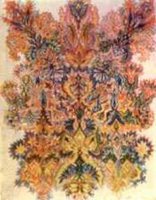
Wain, like many late onset schizophrenics, never recovered from his illness. Because of the invention and increase in availability of medications effective in treating schizophrenia, the prognosis for someone diagnosed with the disorder today is much better than the one for Wain, who had been diagnosed in 1917. There is no yet known cause for the late onset in this type of schizophrenia, much like there is no known cause for the onset in the early type. Theories include much the same hypotheses as those for early onset, namely chemical imbalances and/or traumatic experience coupled with a genetic predisposition to the disorder.








2 comments:
Hmmm...I kinda like the last 2
drawings the best. Very 3d-looking!
I hope that doesn't signify anything.....*
You're on your way, my friend...you're on your way. Can I have your XBox?
Post a Comment